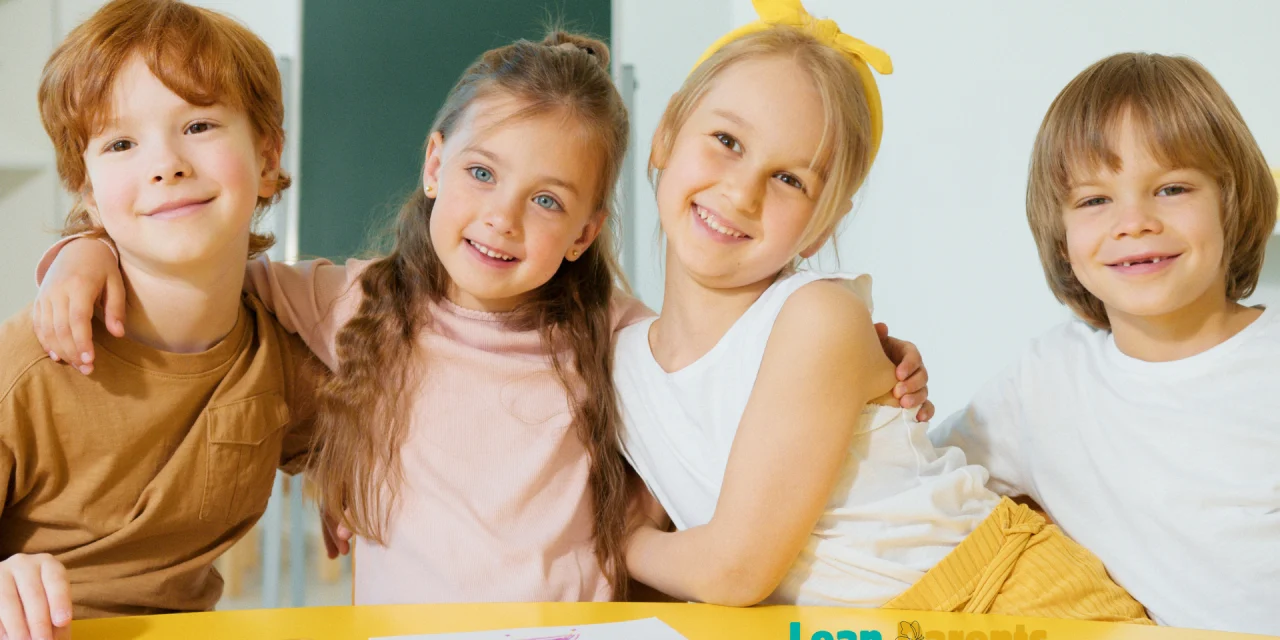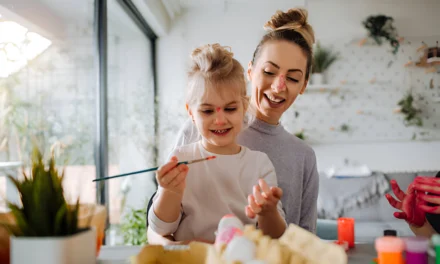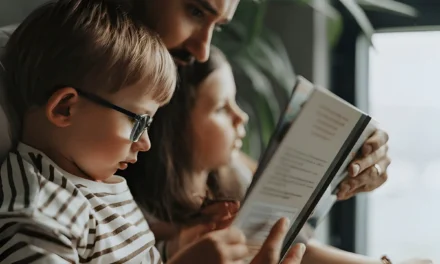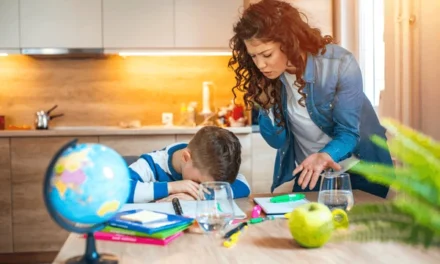Did you know that kids who have trouble with their classmates in preschool might struggle in school later1? This fact shows how important social interaction is for a child’s growth. It affects everything from language and self-confidence to solving problems and doing well in school. As parents and teachers, knowing how social interaction shapes a child’s development is key to raising healthy, well-rounded kids.
Key Takeaways
- Social interaction is essential for a child’s language, self-esteem, learning, and overall attitude development.
- Parents and teachers play a vital role in fostering healthy social development in children.
- Social skills enable children to create successful relationships, improve school readiness, and enhance academic performance.
- The preschool period (ages 3-6) is particularly important for social skill development.
- Children who have difficulty socializing in preschool are more likely to face academic challenges later on.
Understanding Social Development in Early Childhood
Social development in early childhood is key for a child’s growth and happiness. It’s about how a child interacts with and understands social cues. This process includes cooperation, assertion, and self-control, affecting many areas of a child’s life.
Defining Social Development Milestones
Infants start by smiling and cooing at caregivers. Toddlers then move to more independent play and teamwork. By age three, children become less selfish and more independent. They start making friends and feel better about themselves.
Key Components of Social Growth
Social-emotional development in early childhood is about understanding and managing emotions and relationships. This foundation is built through strategies like modeling good behavior and teaching empathy2.
Impact on Overall Child Development
Social skills in early childhood greatly impact a child’s growth. Children learn to cooperate and share, which boosts their language, self-esteem, and learning abilities. These skills help them solve conflicts and shape their attitude and future social interactions3.
| Social Development Milestones | Age |
|---|---|
| Less selfish, more independent, stronger self-identity | 3 years old |
| Interacting and playing with other children, developing friendships, boosting self-esteem | 3 years old |
| Learning to cooperate, take turns, share toys, and resolve disputes in small groups | 3-4 years old |
| Gender identities often well-established due to cultural and family influences | Kindergarten age |
| Gender expansive behaviors, choosing toys, playmates, and activities typically associated with the opposite sex | Preschool age |
| Active social life with friends, including a potential “best friend” and neighborhood peers | 4 years old |
Encouraging children to invite friends over helps build social skills. Their friendships shape their behavior and thinking, as they test boundaries and show independence3.
2 Parents and caregivers are key in a child’s social and emotional growth. By modeling good behavior and providing opportunities for peer interaction, they help with social-emotional learning and development.
“Social-emotional development lays the groundwork for healthy social relationships and can be nurtured through strategies like modeling appropriate behaviors and teaching empathy.”
The Foundation of Social Interaction During Infancy
From birth to 2 months, babies look for comfort and support from caregivers. This helps them feel safe and build trust. It’s important for caregivers to be warm and kind when responding to their needs4.
Infants communicate in different ways, like sounds, facial expressions, and body language. When caregivers respond with comfort, babies start to trust them5. It’s also key to have routines and explore to help them show their feelings and needs5.
Between 4 to 6 months, babies start to mimic facial expressions and react to people. This is a big step in their social and emotional growth4. By 7 to 9 months, they might feel scared of strangers or loud noises. But with comfort and slow exploration, they can become more curious and confident4.
By 9 to 12 months, babies start to understand words and begin to express themselves. Caregivers can help them connect words with feelings. This boosts their confidence and helps them make choices4.
Social and emotional development is crucial for a child’s health and happiness. It affects their learning in school and beyond4. To support this, parents can make eye contact, talk to their babies, and create a safe, loving environment4.
There are many resources available to help parents. Websites like Zero To Three, Pathways.org, and Michigan.gov offer tips and advice4.
| Social-Emotional Milestone | Age Range | Key Behaviors |
|---|---|---|
| Bonding and Trust | Birth to 2 months | Seeking comfort from caregivers, communicating needs and emotions |
| Facial Expression and Responsiveness | 4 to 6 months | Copying facial expressions, responding to people |
| Stranger Anxiety and Confidence | 7 to 9 months | Displaying fear of strangers, exploring new situations with support |
| Language and Self-Expression | 9 to 12 months | Recognizing words, expressing emotions and preferences |
Children who are emotionally healthy do better in relationships with adults and peers5. Social-emotional development is key to a child’s well-being5. Through early interactions with caring adults, babies and toddlers learn how to connect with others5.
Social and emotional development help children grow emotionally. They learn to navigate their world through interactions with adults and peers5.
The social-emotional milestones focus on children’s ability to manage their emotions and form good relationships5. Every child develops at their own pace, and milestones can vary based on culture5. Social-emotional health is about forming secure bonds, managing emotions, and exploring5.
The quality of early relationships greatly affects a child’s learning and growth. Caregivers are key in responding to infants’ needs for comfort and care5.
Social Skills Development in Toddlers and Preschoolers
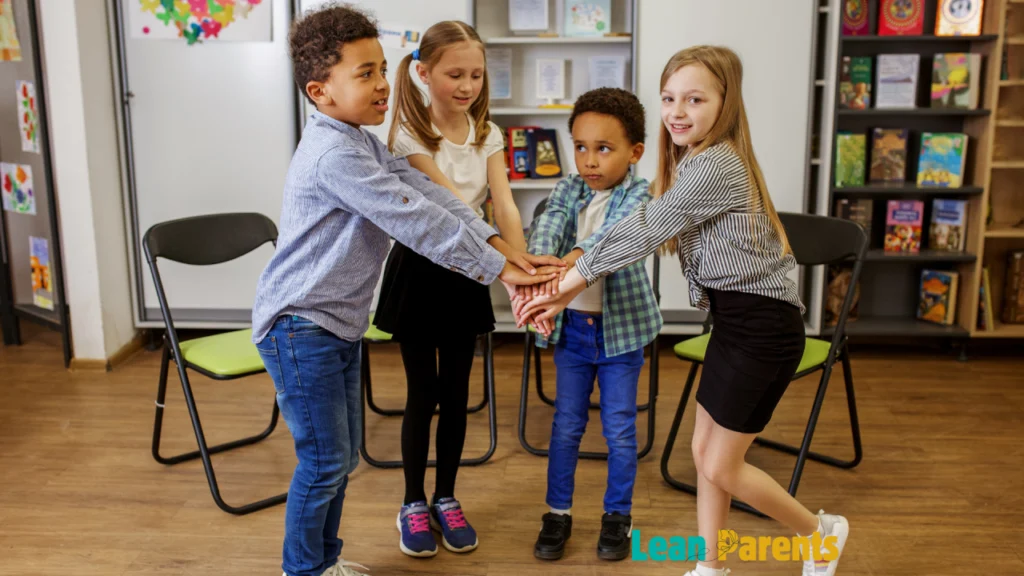
Toddlers and preschoolers grow fast, learning new social skills. They start to be independent, show love openly, and work well with others. Learning these skills is key for their growth and happiness.
Communication Patterns
Young children move from simple gestures to talking more. They learn to listen well, which helps them understand better6. They also start to follow rules from teachers, a big step for school.
Peer Relationships
Friendships become more important as they grow. Kids learn to share, feel for others, and work together6. Sharing ideas and working in groups is a big step for them6.
Emotional Expression
They also learn to show their feelings, like throwing tantrums and calming down6. Feeling for others and showing kindness is very important6. Teaching them about respect and boundaries helps too6.
Parents can help by setting up playdates and showing good social behavior6. Making mistakes is okay, but learning from them is important6.
| Social Skill | Challenges for Toddlers and Preschoolers | Supportive Strategies |
|---|---|---|
| Sharing | Toddlers and preschoolers find it hard to share because they focus on their own needs6. | Encourage sharing by showing it’s okay to share some things. Set clear rules6. |
| Empathy | Young kids might not understand or share others’ feelings, making it hard to be kind6. | Teach them about feelings and show empathy. Encourage them to think about others’ feelings6. |
| Collaboration and Cooperation | It’s tough for them to work well in groups, especially beyond just sharing6. | Give them chances to play together and learn to listen and communicate6. |
Helping toddlers and preschoolers with social skills is crucial. It helps them deal with friends and build strong relationships later on.
“Children with Autism Spectrum Disorder (ASD) often struggle with social skills, such as making and maintaining friendships, and may have difficulties with empathy and understanding social cues.”7
Spotting and helping with social skill issues early on is very beneficial. It helps all kids grow and feel good about themselves7. Things like therapy, interactive teaching, and a supportive place help kids develop social skills7.
Parent-Child Bonding and Social Development

The bond between parents and children is key to a child’s social growth. Secure attachment in early years sets the stage for future relationships and social skills8. Parents offer the first chance for kids to make meaningful connections and learn to communicate and interact socially8. Everyday moments with parents are vital for a child’s social skills.
Parents can strengthen this bond by quickly responding to their child’s needs, showing physical affection, and keeping communication open as the child grows8. Warm, loving responses from caregivers help children understand communication, behavior, and emotions, which are key for strong social learning skills8.
- Strong parent-child relationships give children a sense of security and confidence to explore the world8.
- Positive interactions with caregivers help develop important life skills like problem-solving and socialization8.
- Encouragement from parents during play boosts children’s confidence to try new things, experiment, and learn from mistakes8.
By playing and interacting with their children, parents strengthen the parent-child relationship and support healthy social and emotional growth8.
“Early strong attachments and relationships lead to better mental health outcomes and reduce behavior challenges in adolescence and adulthood.”
Creating warm, positive, and responsive parent-child relationships builds a child’s confidence, resilience, and communication skills. These are crucial for facing future challenges and building relationships8.
In summary, the parent-child relationship is crucial for a child’s social development. Secure attachment, responsive caregiving, and positive interaction are essential for the social-emotional skills children need to succeed98.,
The Role of Social Interaction in Language Acquisition
Learning a language is more than just knowing words. It’s about how we talk and understand each other. Social interaction is key in teaching a child to speak, giving them a strong base for learning.10
Children learn many different ways of speaking through talking with others. This helps them become more fluent and comfortable with language. It also makes learning fun and meaningful, helping them remember more10.
Verbal Communication Skills
Talking with family, friends, and teachers is crucial for a child’s speaking skills10. These conversations give them practice and feedback. This helps them speak clearly and confidently10.
Having a supportive group around them motivates and helps them grow in their language skills10.
Non-verbal Communication Development
Learning to communicate without words is also important. Children pick up on gestures and facial expressions by watching others10. Knowing how to use these non-verbal cues helps them connect better with others10.
Being around different cultures helps children understand the language’s background. This makes them better communicators10.
Language Learning Through Social Play
Playing games and doing activities together is a great way for kids to learn language10. It lets them try out new words and learn how to interact with others10. This kind of play helps them understand language in a real-world setting10.
In short, talking and playing with others is vital for learning a language. It improves speaking and listening skills, and helps kids understand different cultures. By focusing on social interaction, we can help children grow in their language abilities from a young age10.
| Benefit of Social Interaction in Language Acquisition | Description |
|---|---|
| Cognitive Skills Development | Language acquisition involves cognitive skills development through social interaction, allowing learners to enhance linguistic agility and transition to spontaneous communication10. |
| Exposure to Diverse Language Patterns | Social interaction introduces learners to colloquialisms, idiomatic expressions, and informal language usage, aspects vital for a comprehensive language command10. |
| Emotional Significance and Positive Learning | Emotional significance in language learning through social interaction enhances retention and fosters a positive learning environment10. |
| Supportive Language Community | Supportive language communities provide encouragement, motivation, and constructive feedback for successful language acquisition10. |
| Cultural Competence Development | Social interaction aids in understanding cultural nuances, social norms, and contextual appropriateness in language use10. Learners benefit from exposure to diverse cultural perspectives during social interactions, enriching their understanding of the language’s cultural context10. |
“Social interaction is essential for language acquisition, starting much earlier than previously understood, even before the ‘sensitive period’ for speech-language learning around 6 months of age.”11
Research shows how important talking and interacting are for learning a language. Studies prove that babies and young children need to talk with caregivers to learn12. Also, kids with Autism show how social and language skills are closely linked12. Brain scans show which parts of the brain are active when we talk and interact12.
By understanding how social interaction helps with language, we can better support kids from a young age. This knowledge helps us create learning environments that are engaging, supportive, and culturally rich101211.
Building Self-Esteem Through Social Connections
Positive social connections are key to a child’s self-esteem and confidence13. A study over 20 years showed that good friendships make kids feel okay with who they are and part of a group13. But, kids who find it hard to make friends might feel sad or not good enough13.
Parents can help a lot by encouraging their kids to make friends, praising their social skills, and helping them deal with tough social situations13. The study found that good friendships boost self-esteem, and high self-esteem leads to even better friendships14. This creates a cycle that helps kids grow and develop over time13.
If a child’s self-esteem or friendships are struggling, it’s important for parents to step in and offer support13. While there’s not much research on adults, the studies on kids show how crucial positive friendships are for their self-esteem and confidence14.
| Findings from the Meta-Analysis | Details |
|---|---|
| Scope of the Analysis |
|
| Key Findings |
|
The study highlights the importance of positive friendships in building a child’s self-esteem and confidence1314. By supporting their kids and helping them make meaningful connections, parents can help them feel valued and develop the social skills needed for success13.
“Positive social relationships, social support, and social acceptance influence self-esteem development across ages 4 to 76.”
Social Skills in Educational Settings
Educational settings are key for students to learn social skills. In the classroom, students learn to work together, share, and follow rules. Teachers show them how to interact properly and support their learning15.
Students at risk or with disabilities might find social interactions hard. But, studies show teaching social skills directly can help15.
Classroom Dynamics
Classrooms are places where students can practice social skills16. Games, decision-making tasks, and role-plays help them learn to communicate and solve problems16. A good classroom plan helps establish routines and teach important social skills16.
Teacher-Student Relationships
Teacher-student relationships are vital for social growth17. Teachers who show good social behaviors, like listening and empathy, motivate students to learn17. This leads to better communication and teamwork among students17.
Peer Learning Opportunities
Learning with peers helps students improve their social skills in a safe space16. Activities like joint routines and feedback sessions help them learn and apply new skills16. Tools like videos and simulations also help teach social skills to students with disabilities15.
By creating positive classrooms, supporting teacher-student bonds, and offering peer learning, schools are crucial for social skill development151617.,,
Cultural Influences on Social Development
The culture a child grows up in shapes their social skills and how they express themselves. Socialization processes vary between Western and non-Western. Some cultures focus more on following parental and societal rules in social development18. It’s important to know these differences to support social skills in diverse groups.
Helping, sharing, and caring behaviors increase in childhood and are linked to positive peer interactions18. Young East Asian children show more of these behaviors than their Western peers18. Cooperation is key for good peer interactions, and peers like cooperative behavior18. Children from certain cultures are more cooperative and less competitive than others18.
However, competition can sometimes hurt group harmony, though it’s common in most cultures18. East Asian kids are more cooperative with friends and family but competitive in school18. Aggression perception also varies across cultures and countries18. While physical aggression is usually frowned upon, other forms of aggression are viewed differently18.
Cultural values affect how parents raise their kids, influencing discipline and setting boundaries19. Collectivist cultures, found in Asia, Central America, South America, and Africa, stress community over individual needs19. In contrast, individualistic cultures, common in North America and Western Europe, value being independent and assertive19.
These cultural differences show in how kids describe themselves and communicate19. Kids from individualistic cultures highlight their unique qualities, while those from collectivist cultures focus on their relationships19. Their stories also reflect their parents’ communication style, with individualistic cultures focusing on self and collectivist cultures on relationships19.
The environment where a child grows up also impacts their social development19. Factors like community and cultural influences, as well as environmental hazards, affect children’s health and well-being19. Kids are more exposed to these hazards because they eat, drink, and breathe more per pound of body weight than adults19.
| Cultural Differences in Social Development | Collectivist Cultures | Individualistic Cultures |
|---|---|---|
| Parenting Styles | Focus on community needs, collaborative behavior | Value assertiveness, independent action, individual over group |
| Discipline Methods | Focus on how child’s behavior affects others | Take away personal items from children |
| Self-Description | Based on relationships with others | Based on unique attributes |
| Communication Style | Other-oriented stories emphasizing authority and relationships | Self-focused stories focused on personal preference |
In conclusion, a child’s culture deeply influences their social development. It shapes their social skills, communication, and behavior. Understanding these cultural differences helps us support and nurture the diverse social skills of children from various backgrounds.
Gender Differences in Social Skill Development
Research shows that there might be differences in how boys and girls develop social skills. Several studies suggest girls often grow social skills faster than boys.
Boys’ Social Development Patterns
A study with over 1,000 elementary school students found something interesting. Boys’ social skills seemed to get worse over time, while girls’ skills stayed steady20. Teachers rated boys lower than girls in being assertive, cooperative, and self-controlled20.
This means young boys might struggle more with social skills. This could lead to problems in school and behavior20.
Girls’ Social Development Patterns
The same study showed girls were rated higher than boys in social skills from kindergarten to sixth grade21. Girls’ social skills in kindergarten predicted their future social skills21. This shows girls tend to have more advanced social skills than boys in elementary school21.
It’s key to remember that these patterns can vary. Individual differences and cultural factors play a big role in social skill development. Schools using Social Emotional Learning (SEL) can help all students grow, no matter their gender20.
Managing Social Challenges and Conflicts
Learning to solve problems and manage conflicts is key for getting along with others. Kids need to know how to control their feelings, talk things out, and find solutions that everyone can agree on22.
Parents and teachers are important in helping kids learn these skills. They can show kids how to solve problems, talk about what might happen in tough situations, and let kids handle small conflicts on their own. This helps kids learn to deal with social challenges22.
Kids face many challenges when they interact with others. They might disagree over things they share or misunderstand because of cultural differences. Teaching kids to be empathetic, communicate openly, and think creatively helps them handle these situations well23.
Being able to handle conflicts is a big part of growing up well. By teaching these skills, we help kids make better friends, work together, and help their communities22.
“Conflict is not a negative thing; it’s an opportunity to learn, grow, and strengthen relationships.”
As kids deal with the ups and downs of social life, the help of parents and teachers is crucial. Their support helps kids develop the skills they need to succeed in life23.
The Impact of Environment on Social Growth
The social environment is key in shaping a child’s social development. Family dynamics and parenting styles at home set the stage for early social skills. Researchers suggest that a supportive and stimulating home environment is vital for healthy social growth24.
The school environment also greatly affects a child’s social development. Classroom size, teacher qualities, and peer interactions all matter. Studies show that24 group activities and sharing materials can boost social interaction. Also, having fewer children in a space can lead to more meaningful interactions24.
Socioeconomic factors also influence social skill development. Research finds that25 living in disadvantaged neighborhoods can lead to more injuries in adults and children. This can affect a child’s social experiences and relationships25.
| Environmental Factor | Impact on Social Development |
|---|---|
| Home Environment | Family dynamics and parenting styles shape early social skills |
| School Environment | Classroom size, teacher characteristics, and peer interactions influence social growth |
| Socioeconomic Factors | Neighborhood conditions can impact social experiences and relationships |
In summary, the social environment, including home and school, is crucial for a child’s social development. Creating supportive and engaging environments is key for promoting healthy social growth24.
Supporting Healthy Social Development at Home
As parents, we are key in helping our kids grow socially. We do this by offering chances to learn and showing them good ways to act. Doing things together as a family and setting up playdates helps kids learn to talk and get along with others26.
How we act and feel around others also shapes our kids. Showing them how to handle disagreements and be kind can teach them a lot2627. Being open and supportive helps our kids grow socially.
By mixing fun social activities with good examples, we help our kids develop important social skills. This prepares them for making friends and doing well in different social situations2627.
FAQ
What is the crucial role of social interaction in child development?
How is social development defined and what are its key components?
What are the social development milestones in infancy?
How do social skills develop in toddlers and preschoolers?
What is the role of the parent-child bond in social development?
How does social interaction impact language acquisition?
How do positive social connections contribute to a child’s self-esteem?
What is the role of educational settings in social skill development?
How do cultural factors influence social skill development?
Are there gender differences in social skill development?
How can children learn to manage social challenges and conflicts?
What is the impact of environment on social development?
How can parents support healthy social development at home?
Source Links
- Social Development in Children – SCAN of Northern Virginia
- How Kids Learn to Share and Care in Early Childhood
- Social Development in Preschoolers
- Infant Social & Emotional Development
- Social-Emotional Development: Infants and Toddlers
- 8 Important Social Skills For Kids And How To Teach Them – Begin Learning
- Social Skills – Kid Sense Child Development
- Relationships and child development
- Mirroring the Early Parent-Child Bond for Infants and Toddlers | ECLKC
- Social Interaction & Language Learning
- Everyday social interactions predict language development in infants
- How relevant is social interaction in second language learning?
- Positive relationships boost self-esteem, and vice versa
- The Link Between Self-Esteem and Social Relationships
- Practicing Social Skills: How to Teach Your Student Social Interactions
- 13 Evidence-Based Ways to Teach Social Skills in 2023
- Exploring the Benefits of Modeling Social Skills in Education | Everyday Speech
- Culture and Social Development | Encyclopedia on Early Childhood Development
- Cultural Influences on Child Development
- CEHD researcher discovers gender differences in trajectory of children’s social skills growth – Education and Human Development
- Boys and girls learn social skills on different paths, according to data – Research@Texas A&M
- Navigating the Complexity of Social Conflicts – ADR Times
- Importance of Social Interaction | Evansonslabs Consulting and Coaching
- What can teachers do to make the classroom environment more conducive to children’s learning and development?
- Physical and Social Environmental Factors – U.S. Health in International Perspective
- Building Social and Emotional Skills at Home
- 20 Evidence-Based Social Skills Activities and Games for Kids

